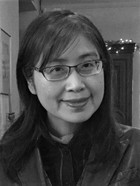Contact
Weihong Bao is associate professor of film and media at University of California, Berkeley. Her book and essays explore the relationship between medium and environment by engaging intellectual history, political theory, cultural anthropology, and comparative media theory. She is the author of Fiery Films: The Emergence of an Affective Medium in China, 1915–1945 (University of Minnesota Press, 2015), honored by the Modernist Studies Association Best Book Prize in 2016. Among her publications, she has co-edited two special issues, “Media Climates” (Representations 2022) and “Medium/Environment” (Critical Inquiry 2023). She is the editor-in-chief for The Journal of Chinese Cinemas and co-edits the “film theory in media history” book series published by Amsterdam University Press.
At the RCC, she will work on a new book, “Background Matters: Set Design and The Art of Environment.” The book examines the co-emergence of environmental thinking and set design from early to mid-twentieth-century China. Through a transnational history that reconceives set design as both aesthetic and social experiments on diverse notions of environment, she seeks alternative understandings of human and nonhuman in relation to labor, technocracy, and craft.
RCC Research Project: Background Matters: Set Design and The Art of Environment
Selected Publications:
- “Set Design Thinking and the Art of the Human,” Critical Inquiry 49, no. 3 (2023): 428-461. https://doi.org/10.1086/723722.
- “Hermeneutics of Doubt: Atmospheric Knowing and an Ecology of the Mind,” Representations 157, no. 1 (2022): 142–192. https://doi.org/10.1525/rep.2022.157.7.142.
- “Archaeology of a Medium: The (Agri)Cultural Techniques of a Paddy Film Farm.” Boundary 2 49, no. 1 (2022): 25–69. https://doi.org/10.1215/01903659-9615389.
- with James Leo Cahill and Brian R. Jacobson. “Media Climates: An Introduction,” Representations 157, no. 1 (2022): 1–16. https://doi.org/10.1525/rep.2022.157.1.1.
- “The Art of Control: Hong Shen, Behavioral Psychology, and the Technics of Social Effects.” Modern Chinese Literature and Culture 27, no. 2 (Fall 2015): 249–297. http://www.jstor.org/stable/24886569.


